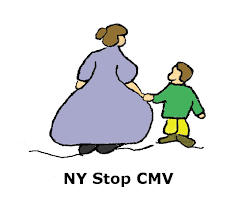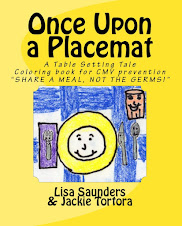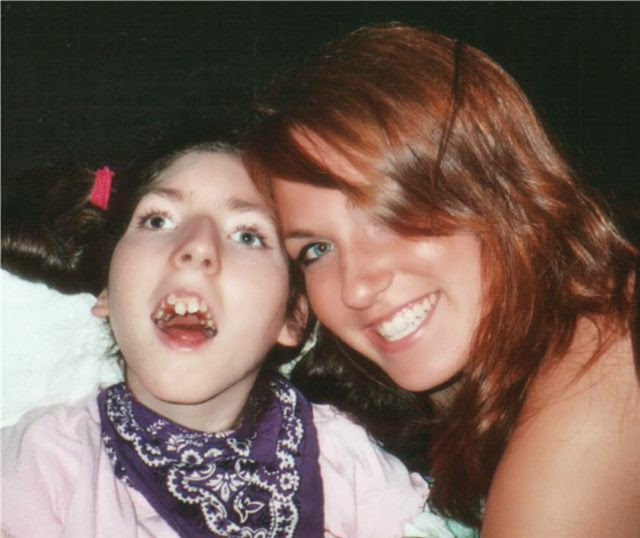Page 116 - Model Child Care Health Policies, published by the American Academy of Pediatrics, recommends staff members acknowledge and accept “Occupational Risk” of working in child care “including infections that can damage a fetus during pregnancy”
NEW LAW IN NEW YORK
Did you know about the new law aimed at educating child care providers and pregnant women about cytomegalovirus (CMV), the leading viral cause of birth defects?
- NYAssembly.gov: “Assemblymember Linda B. Rosenthal Bill to Educate Childcare Providers, Pregnant Patients on Cytomegalovirus Dangers Signed into Law,” November 28, 2022.
- The Post-Standard: "How a Baldwinsville mother fought for 30 years to pass a law that might have saved her daughter", Emma Vallelunga, Jan.1, 2023, Syracuse.com, Dec. 27, 2022 (Facebook).
- CNYCentral.com:”Baldwinsville mom celebrates new law in daughter's name to protect pregnant women, babies”, Megan Coleman, Dec.15, 2022 (Facebook).
Once child care providers learn about CMV, their increased risk and need to carefully follow infection control policies, or learn there is a known case of congenital CMV in their group, they may be wondering if they should work with that child.
Cytomegalovirus (CMV) is a viral infection that is common in children. Up to 70% of children ages 1 to 3 years in group care settings excrete the virus (1).
Staff of childbearing age who care for infants and children should be provided the following information:
- The increased probability of exposure to cytomegalovirus (CMV) in the child care setting;
- The potential for fetal damage when CMV is acquired during pregnancy;
- The importance of hand hygiene measures (especially handwashing and avoiding contact with urine, saliva, and nasal secretions) to lower the risk of CMV;
- The availability of counseling and testing for serum antibody to CMV to determine the caregiver/teacher’s immune status.
Female employees of childbearing age should be referred to their primary health care provider or to the health department authority for counseling about their risk of CMV infection. This counseling may include testing for serum antibodies to CMV to determine the employee’s immunity against CMV infection.
Since saliva can transmit CMV, staff should be advised not to share cups or eating utensils, kiss children on the lips, or allow children to put their fingers or hands in another person’s mouth.
RATIONALE
CMV is the leading cause of congenital infection in the United State and approximately 1% of live born infants are infected prenatally (1). While most infected fetuses likely escape resulting illness or disability, 10% to 20% may have hearing loss, developmental delay, cerebral palsy, or vision disturbances (1). Although maternal immunity does not entirely prevent congenital CMV infection, evidence indicates that acquisition of CMV during pregnancy (primary maternal infection) carries the greatest risk for resulting illness or disability of the fetus (2).Children enrolled in child care facilities are more likely to acquire CMV than are children cared for at home (2). Epidemiologic data, as well as laboratory testing of viral strains, has provided evidence for child-to-child transmission of CMV in the child care setting (1). Rates of CMV excretion vary among facilities and between class groups within a facility. Children between one and three years of age have the highest rates of excretion; published studies report excretion rates between 30% and 40% (2). Many children excrete CMV asymptomatically and intermittently for years.
With regard to child-to-staff transmission, studies have shown increased rates of infection with CMV in caregivers/teachers ranging from 8% to 20% (2). The increased risk for exposure to CMV and high rates of acquisition of CMV in caregivers/teachers could lead to increased rates of congenital CMV infection. Meticulous hand hygiene can reduce the rates of infection by preventing CMV transmission. With current knowledge on the risk of CMV infection in child care staff members and the potential consequences of gestational CMV infection, child care staff members should receive counseling in regard to the risks of acquiring CMV from their primary health care provider. However, it is also important for the child care center director to inform infant caregivers/teachers of the increased risk of exposure to CMV during pregnancy (1).
COMMENTS
For additional information regarding CMV, consult the CMV chapter in the current edition of the Red Book from the American Academy of Pediatrics (AAP).
TYPE OF FACILITY
Center, Early Head Start, Head Start, Large Family Child Care Home, Small Family Child Care HomeRELATED STANDARDS
3.6.1.1 Inclusion/Exclusion/REFERENCES
- Aronson, S. S., T. R. Shope, eds. 2017. Managing infectious diseases in child care and schools: A quick reference guide, 4th Edition.Elk Grove Village, IL: American Academy of Pediatrics.
- American Academy of Pediatrics. Cytomegalovirus (CMV) Infection In: Kimberlin DW, Brady MT, Jackson MA, Long SS, eds. Red Book: 2018 Report of the Committee on Infectious Diseases. 31st Edition. Itasca, IL: American Academy of Pediatrics; 2018: 310-317
NOTES
Content in the STANDARD was modified on 3/31/17.
(Visit: https://nrckids.org/CFOC/Child care licensing agencies should instruct child care centers and preschools to educate staff about CMV. The book, Model Child Care Health Policies, has a sample document to be signed by staff (paid or volunteer) to show “Acceptance of Occupational Risk by Staff Members,” which includes “exposure to infectious diseases (including infections that can damage a fetus during pregnancy)” (American Academy of Pediatrics, Pennsylvania Chapter, Aronson, SS, ed., 2014, p. 116).
NOTE:
Although I know personally of one lawsuit settled out of court in the US (so there is no record of it), I do know of these published cases involving what can happen if women are not educated about their CMV risks:
1) Connecticut: Lawsuit featured in the article, "Couple wins $37.6 million in Superior Court ruling against UConn Health for fertility procedure that left one child dead and her twin requiring lifetime medical attention", which included the comment, “The Center for Advanced Reproductive Services did not inform Monroe-Lynch and 'knowledgeably obtain her consent' about the risks associated with a CMV infection, according to the lawsuit” (Hartford Courant, 2021). The lawyers' website states, “The devastating consequences of contracting congenital CMV infection early in pregnancy are well-known in the medical community. There are simple safeguards in place to protect prospective parents and their children from this horrible disease” (Walsh Woodard LLC, 2021).
2) Australia: ”A Court of Appeal ruled that the child's disabilities resulted from the woman being infected with cytomegalovirus (CMV) at work (Hughes v SDN Children's Services 2002)” (WorkSafe). Lawyers commented, “The allegations of negligence were that Sydney Day Nursery breached its duty of care to Linda ...by failing to warn her of the risks of CMV in circumstances where the centre knew or ought to have known of the risks of CMV to pregnant women…”(Meridian Lawyers).








